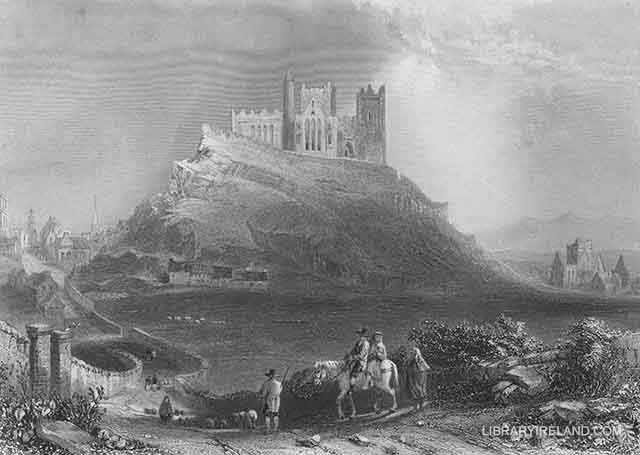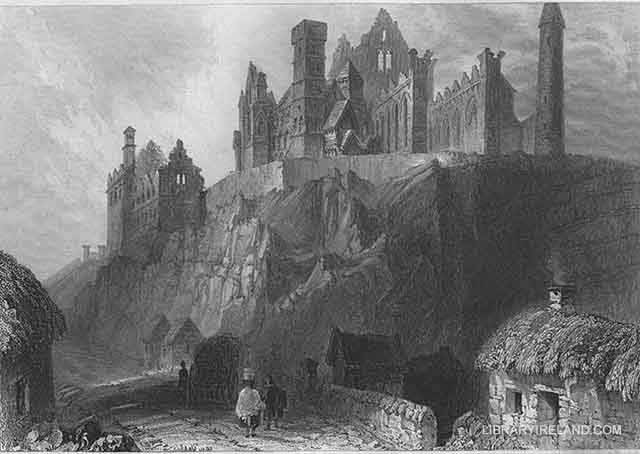The Rock of Cashel, Tipperary
THE ROCK OF CASHEL arrests the traveller on his road from Limerick to Kilkenny—a remarkable-looking eminence, the only one in an extensive plain, and crowned with a pile of the noblest assemblage of monastic ruins in Ireland. It resembles nothing that we remember except the citadel of Gratz, built on just such a rock, with a town at its base. The ruins are supposed by some to have been both a monastic and a regal edifice; and from the want of regularity in plan, as well as peculiarities in the workmanship and style of ornamenting, appear to have been the work of several periods. The town of Cashel, once the residence of the kings of Munster, has now dwindled into a place of very moderate pretensions. "The want of a navigable river," says Wright, "is the only assignable cause for the desertion of this royal seat, encompassed by a great extent of country, fertile as cupidity could desire, and diversified by gentle undulations. The most ancient structure in the group of buildings on the rock is called Cormac's Chapel, from the founder, Cormac-Mac-Culinan, King of Munster, and Archbishop of Cashel, who flourished in the beginning of the tenth century, and was slain in battle by the Danes.
"Cashel was constituted a borough by Archbishop Donat, in 1216; and enclosed by a stone wall, in 1320. Archbishop O'Hedian repaired the several defences, and built a hall for the vicars choral, in the year 1421. The city now returns one member to the imperial parliament.
"The great 'Magician of the North' arrived at Cashel on his way to the metropolis, and being unprepared for a spectacle so magnificent—one so suited to the peculiar habit of his soul—forgot his intended journey, and was found wandering amongst the lone aisles of the cathedral at the approach of night. Another eminent individual, an eloquent candidate for the suffrages of his countrymen, felt the inspiration of the ruined pile that, hanging over his rude forum, told him of the once proud pre-eminence of his country. 'Here,' he exclaimed, 'my cradle was first rocked, and the first object that in my childhood I learned to admire was that noble ruin, an emblem as well as a memorial of Ireland, which ascends before us, at once a temple and a fortress, the seat of religion and nationality, where councils were held, where princes assembled, the scene of courts and of synods, and on which it is impossible to look without feeling the heart at once elevated and touched by the noblest as well as the most solemn recollections.' The effect of such an address upon a people of such an enthusiastic temperament may readily be concluded. The orator obtained the reward of his poetic and eloquent appeal."


